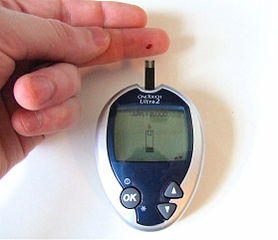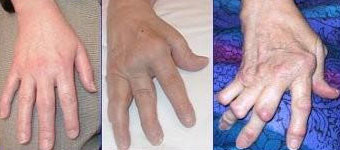Burning Fingers and Hands Causes and Meaning
The sensation of burning concerns most of us to a similar degree as pain. It usually indicates that there is some underlying medical condition if there are no obvious external causes like a heat source. Burning can be a sign of inflammation and even tissue death but sometimes just mild surface conditions can cause significant burning. It may eventually progress to hand pain.
Conversely severe internal conditions may not cause any symptoms or slight burning and mild pain. Usually the intensity of the burning sensation is an indication of the severity of the underlying condition. Burning can arise from any part of the hands and fingers. This includes the skin, subcutaneous tissue, ligaments, muscles, tendons, joints and bones.
Sometimes the problem does not lie in the hands and fingers but elsewhere in the arm or even at the spine by affecting the nerves that supply sensation to the hands and feet. Burning that progressively worsens and if accompanied by tremors, muscle weakness or paralysis should be immediately investigated by a doctor even if there is no pain present. Similarly many of the same causes as knuckle pain and wrist pain may also cause burning hands and fingers.
Causes of Burning Fingers and Hands
Trauma
Injury to the fingers and hands are by far the most common cause of acute burning sensations in the area. The hands are among the most hard working part of the body and is constantly in contact with the environment. This physical contact may cause the skin to be exposed to a range of injuries including physical trauma (like a hot stove), harsh chemicals (like pool acid) and less commonly electromagnetic forces. Trauma may also affect the deeper tissues like the muscles, tendons, ligaments. Minor trauma can also contribute to contact dermatitis.

Strain
As with any part of the body, the hands and fingers are prone to strain mainly from overuse. In fact the hands and fingers are probably more at risk of strain considering that these parts are an integral part of our interaction with our environment. With modern life and technology the hands are constantly busy, be it on a computer keyboard or mobile device.
Although the problem may be once off from a single incident of strain, repetitive stress injuries are common these days. It may involve the muscles, tendons, ligaments, joints and sometimes the bones. Furthermore muscle cramps may occur which also can present with a burning sensation.
Carpal Tunnel Syndrome
Carpal tunnel syndrome is one type of strain where the tendons of the forearm become inflamed due to repeated use. The tendons swell and press against the median nerve which passes with the tendons through a bony conduit in the wrist known as the carpal tunnel.
It is becoming a common condition these days often associated with prolonged computer use. A burning pain, tingling and numbness of the fingers are some of the symptoms of carpal tunnel syndrome. Hand weakness is another common symptom that may also occur.
Nerve Compression
The nerves that run down the arm to supply sensory and motor nerves to the hands and fingers arise from the lower neck and upper back vertebrae. Different parts of the hands and fingers derive this supply from C5 to T1. If there is a pinched neck nerve then abnormal sensations and muscle weakness can be felt along its course.
A bulging spinal disc, degenerative disc disease and bony spurs are some of the reasons why these nerves become compressed.However, a host of other conditions can affect the nerve of the arm and hands, either at its root or along its course. These conditions are known as peripheral neuropathy.
Diabetes
Long term and poorly controlled diabetes mellitus can cause nerve damage. This is known as diabetic neuropathy. It can affect nerves anywhere in the body but the distal parts like the hands and feet are most commonly affected. Symptoms can varying from numbness and tingling to a burning sensation and severe pain even when there is no damage to the skin surface. It arises due to the high glucose levels in the blood irritating the nerve cells as well as narrowing of the tiny blood vessels that nourish these nerve cells.

Poor Blood Flow
Impairment of the blood flow to the hands and fingers often causes burning and tingling before numbness eventually sets it. This can occur with external pressure like with a tight tourniquet that is in place for too long. However, there may also be internal causes like when a blood clot in the arm clogs the arteries of the hand leading to limb ischemia. Narrowing of the arteries may also be a problem as is seen with atherosclerosis where fatty plaques build up in the artery walls. This more often affects the lower limbs but can also affect the hands and feet.
Cold Weather
Cold weather can cause burning of the fingertips and hands. It can also occur with immersing the fingers and hands in water or with touching very cold substances like snow. The cold causes the tiny blood vessels in the fingers and hands to constrict. It is mainly a problem in very cold weather or with long exposure to the cold. Frostbite can eventually set in if there is insufficient protective wear like gloves. In these cases the burning sensation slowly subsides and numbness sets in. Permanent tissue damage can occur.
Raynaud’s Disease
Although Raynaud’s disease is sometimes triggered by cold it is not caused by low temperatures. In Raynaud’s disease the arteries of the fingers and hands constrict and narrow excessively due to the tiny muscles in these arteries contracting tightly. Blood flow is impaired. Sensations can vary from burning to numbness and severe cases which are not promptly treated can lead to tissue damage. Apart from cold, the vasoconstriction can also be triggered by strong emotions among other factors.
Joint Diseases
Burning may be seen in a number of joint diseases. The hands and fingers have many joints which can be afflicted with conditions such as post-traumatic arthritis (after joint injury), septic arthritis (infection), rheumatoid arthritis (autoimmune joint inflammation) and osteoarthritis (degenerative joint diseases). Small joints like those of the fingers are more commonly affected by rheumatoid arthritis while osteoarthritis tends to involve the larger joints.

Other Causes
- Contact dermatitis and other skin diseases
- Nail bed and fingernail infections like paronychia.
- Menopause and related female hormone disturbances
- Infections like impetigo and cellulitis
- Poisons like with arsenic poisoning
- Drug-induced neuropathy
- Insect bites





